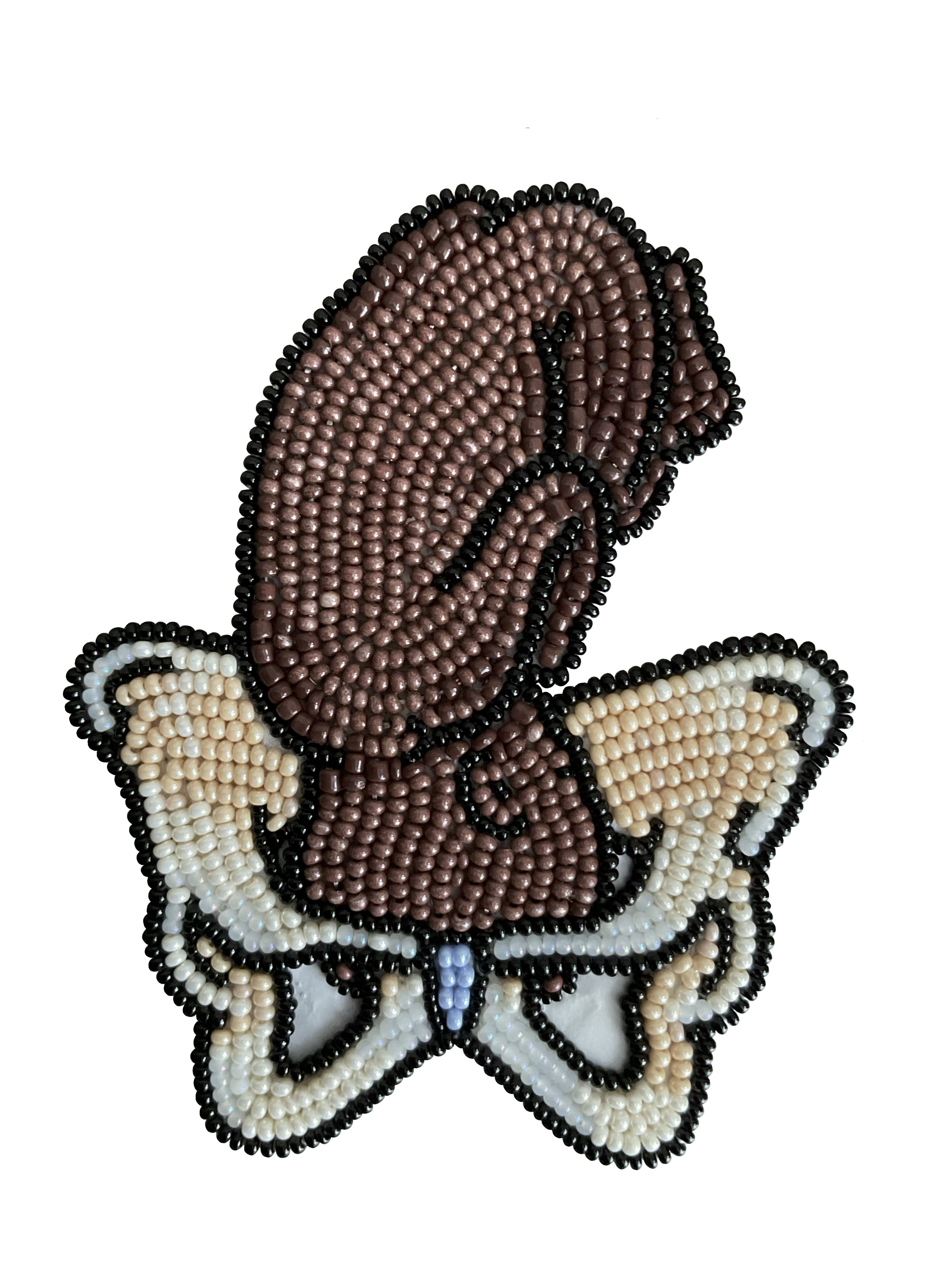Fetus in Situ
DOI:
https://doi.org/10.15273/hpj.v4i1.11990Ключевые слова:
BeadworkАннотация
"Fetus in Situ” is a traditional flat-stitch Métis beadwork piece by settler-Métis artist and medical student Jamie Thompson. The piece measures 10.3 x 8.5cm and is handmade with size 15, 11, and 10 Czech seed beads, depicting a Black fetus with their head within a pelvic bone, about to be born. It considers the structural inequities that Indigenous, Black, and other people of the global majority (PGM) face in Canadian healthcare and in medical imagery. Considering that 30 percent of Canada’s population is non-white and encounters significant social barriers to healthcare access, the representation of non-white skin tones in only 4.5 percent of medical textbooks’ illustrations fails to represent a diversified population (Louie & Wilkes, 2018). In obstetrics specifically, Black women face a three-fold higher risk of death in pregnancy or childbirth compared to their white peers, and there is a studied need for anti-Black racism training and Black healthcare provider representation in obstetrics, a discipline which was founded on experimentation upon Black slaves (Statistics Canada, 2022., CDC, 2024).
Click on the PDF link under the image for the full description.
Библиографические ссылки
Centers for Disease Control and Prevention. (2024). Working together to reduce Black Maternal Mortality. https://www.cdc.gov/healthequity/features/maternal-mortality/index.html#print
Louie, P., & Wilkes, R. (2018). Representations of race and skin tone in medical textbook imagery. Social Science & Medicine, 202, 38–42. https://doi.org/10.1016/j.socscimed.2018.02.023
Merelli, A. (2023). Medical illustrations neglect people with dark skin. A Nigerian doctor-to-be is working to change that. STAT. https://www.statnews.com/2023/08/22/diversity-medical-illustrations-chidiebere-ibe/
Statistics Canada. (2022, October 26). The Canadian Census: A rich portrait of the country’s religious and ethnocultural diversity. https://www150.statcan.gc.ca/n1/daily-quotidien/221026/dq221026b-eng.htm

Загрузки
Опубликован
Выпуск
Раздел
Лицензия
Copyright (c) 2024 Jamie Thompson

Это произведение доступно по лицензии Creative Commons «Attribution-NonCommercial» («Атрибуция — Некоммерческое использование») 4.0 Всемирная.
The journal aims to reduce barriers to publishing and sharing research and inequalities to accessing information.This journal provides immediate open access to its content on the principle that making research freely available to the public supports a greater global exchange of knowledge. The open-access nature of the journal means that there will be no charge for authors or readers to use the journal. The journal has a Creative Commons Attribution Non-Commercial (CCBYNC) attribution which allows the author (and others) to share and distribute their full-text article in other public domains, such as Google Scholar or Research Gate.
